Investigating the Influence of Non-Uniform Characteristics of Layered Foundation on Ground Vibration Using an Efficient 2.5D Random Finite Element Method
Abstract
:1. Introduction
2. Analysis Model and Solution Method
2.1. Formulation of 2.5D FEM Considering Spatial Variability
2.1.1. Basic 2.5D Finite Element Model
2.1.2. Consideration of the Soil Spatial Variability
2.1.3. Track System Modeling and Train Loads
2.2. Program Verification of the Coupled 2.5D Random FEM
2.2.1. Verification of 2.5D FEM Calculation Program
2.2.2. Verification of Non-Uniform Elastic Soil Model
3. Analysis of the Key Factors Influencing the Ground Vibration
4. Vibration of Non-Uniform Elastic Layered Ground at Different Train Speeds
5. Conclusions and Further Discussion
- (1)
- The variation in the soil elastic modulus and train speed has the most important influence on ground vibration; at low speed, the soil homogeneity coefficient has almost no influence on the shape of the acceleration time history curve.
- (2)
- The acceleration upward is much larger than the acceleration downward at most speeds; at cross speed and high speed, the acceleration amplitude decreases with the increase in the homogeneity coefficient.
- (3)
- At low speed and cross speed, both upward and downward peak acceleration at the track center decrease significantly as the homogeneity coefficient increases from 2 to 5; at high speed, the upward peak acceleration continues to decrease as the homogeneity coefficient increases from 2 to 15, while the downward peak value increases slightly.
- (4)
- At cross speed and high speed, an apparent fluctuation effect can be observed at a far distance, and the influencing range of the homogeneity coefficient increases to 0–10 m from 0–2 m as the train speed increases from 60 m/s to 130 m/s.
- (5)
- At cross speed, a phenomenon of an increase in the local rebound in the velocity and acceleration attenuation curve can be observed as the homogeneity coefficient decreases to 2, and the maximum acceleration occurs near the outer edge of the composite track as the ground soil has weaker homogeneity.
Author Contributions
Funding
Data Availability Statement
Conflicts of Interest
References
- Xia, H. Traffic Environment Vibration Engineering; Science Press: Beijing, China, 2010. [Google Scholar]
- Beskou, N.D.; Theodorakopoulos, D.D. Dynamic effects of moving loads on road pavements: A review. Soil Dyn. Earthq. Eng. 2011, 31, 547–567. [Google Scholar] [CrossRef]
- Eason, G. The stresses produced in a semi-infinite solid by a moving surface force. Int. J. Eng. Sci. 1965, 2, 581–609. [Google Scholar] [CrossRef]
- Lu, Z.; Hu, Z.; Yao, H.; Liu, J.; Zhan, Y. An analytical method for evaluating highway embankment responses with consideration of dynamic wheel–pavement interactions. Soil Dyn. Earthq. Eng. 2016, 83, 135–147. [Google Scholar] [CrossRef]
- Fiala, P.; Degrande, G.; Augusztinovicz, F. Numerical modelling of ground-borne noise and vibration in buildings due to surface rail traffic. J. Sound Vib. 2007, 301, 718–738. [Google Scholar] [CrossRef]
- Lefeuve-Mesgouez, G.; Mesgouez, A. Three-dimensional dynamic response of a porous multilayered ground under moving loads of various distributions. Adv. Eng. Softw. 2012, 46, 75–84. [Google Scholar] [CrossRef]
- Dieterman, H.A.; Metrikine, A. Steady-state displacements of a beam on an elastic half-space due to a uniformly moving constant load. Eur. J. Mech. A/Solids 1997, 16, 295–306. [Google Scholar]
- Sheng, X.; Jones, C.; Petyt, M. Ground vibration generated by a load moving along a railway track. J. Sound Vib. 1999, 228, 129–156. [Google Scholar] [CrossRef]
- Yang, Y.; Hung, H. A 2.5D finite/infinite element approach for modelling visco-elastic bodies subjected to moving loads. Int. J. Numer. Methods Eng. 2001, 51, 1317–1336. [Google Scholar] [CrossRef]
- Yang, Y.B.; Hung, H.H.; Chang, D.W. Train-induced wave propagation in multi-layered soils using finite/infinite element simulation. Soil Dyn. Earthq. Eng. 2003, 23, 263–278. [Google Scholar] [CrossRef]
- Takemiya, H.; Bian, X. Substructure simulation of inhomogeneous track and layered ground dynamic interaction under train passage. J. Eng. Mech. 2005, 131, 699–711. [Google Scholar] [CrossRef]
- Bian, X.; Chen, Y.; Hu, T. Numerical simulation of high-speed train induced ground vibrations using 2.5D finite element approach. Sci. China Ser. G Phys. Mech. Astron. 2008, 51, 632–650. [Google Scholar] [CrossRef]
- Bian, X.; Jiang, H.; Chang, C.; Hu, J.; Chen, Y. Track and ground vibrations generated by high-speed train running on ballastless railway with excitation of vertical track irregularities. Soil Dyn. Earthq. Eng. 2015, 76, 29–43. [Google Scholar] [CrossRef]
- Gao, G.; Chen, Q.; He, J.; Liu, F. Investigation of ground vibration due to trains moving on saturated multi-layered ground by 2.5D finite element method. Soil Dyn. Earthq. Eng. 2012, 40, 87–98. [Google Scholar] [CrossRef]
- Gao, G.; Yao, S.; Yang, J.; Chen, J. Investigating ground vibration induced by moving train loads on unsaturated ground using 2.5D FEM. Soil Dyn. Earthq. Eng. 2019, 124, 72–85. [Google Scholar] [CrossRef]
- Sheng, X.; Jones, C.J.C.; Thompson, D.J. A theoretical study on the influence of the track on train-induced ground vibration. J. Sound Vib. 2004, 272, 909–936. [Google Scholar] [CrossRef]
- Phoon, K.K.; Kulhawy, F.H. Evaluation of geotechnical property variability. Can. Geotech. J. 1999, 36, 625–639. [Google Scholar] [CrossRef]
- Wang, M.X.; Wu, Q.; Li, D.Q.; Du, W. Numerical-based seismic displacement hazard analysis for earth slopes considering spatially variable soils. Soil Dyn. Earthq. Eng. 2023, 171, 107967. [Google Scholar] [CrossRef]
- Auersch, L. Ground vibration due to railway traffic—The calculation of the effects of moving static loads and their experimental verification. J. Sound Vib. 2006, 293, 599–610. [Google Scholar] [CrossRef]
- Hu, H.; Huang, Y. PDEM-based stochastic seismic response analysis of sites with spatially variable soil properties. Soil Dyn. Earthq. Eng. 2019, 125, 105736. [Google Scholar] [CrossRef]
- Deng, E.; Liu, X.Y.; Ni, Y.Q.; Wang, Y.W.; Zhao, C.Y. A coupling analysis method of foundation soil dynamic responses induced by metro train based on PDEM and stochastic field theory. Comput. Geotech. 2023, 154, 105180. [Google Scholar] [CrossRef]
- Wang, Y.; He, J.; Shu, S.; Zhang, H.; Wu, Y. Seismic responses of rectangular tunnels in liquefiable soil considering spatial variability of soil properties. Soil Dyn. Earthq. Eng. 2022, 162, 107489. [Google Scholar] [CrossRef]
- Papadopoulos, M.; François, S.; Degrande, G.; Lombaert, G. The influence of uncertain local subsoil conditions on the response of buildings to ground vibration. J. Sound Vib. 2018, 418, 200–220. [Google Scholar] [CrossRef]
- Alamanis, N.; Dakoulas, P. Effects of spatial variability of soil properties and ground motion characteristics on permanent dis-placements of slopes. Soil Dyn. Earthq. Eng. 2022, 161, 1–22. [Google Scholar] [CrossRef]
- Zhang, L.L. Reliability Theory of Geotechnical Engineering; Tongji University Press: Shanghai, China, 2011. [Google Scholar]
- Coelho, B.Z.; Nuttall, J.; Noordam, A.; Dijkstra, J. The impact of soil variability on uncertainty in predictions of induced vibrations. Soil Dyn. Earthq. Eng. 2023, 169. [Google Scholar] [CrossRef]
- Kouroussis, G.; Vogiatzis, K.E.; Connolly, D.P. A combined numerical/experimental prediction method for urban railway vibration. Soil Dyn. Earthq. Eng. 2017, 97, 377–386. [Google Scholar] [CrossRef]
- dos Santos, N.C.; Barbosa, J.; Calçada, R.; Delgado, R. Track-ground vibrations induced by railway traffic: Experimental validation of a 3D numerical model. Soil Dyn. Earthq. Eng. 2017, 97, 324–344. [Google Scholar] [CrossRef]
- Connolly, D.; Galvín, P.; Olivier, B.; Romero, A.; Kouroussis, G. A 2.5D time-frequency domain model for railway induced soil-building vibration due to railway defects. Soil Dyn. Earthq. Eng. 2019, 12, 332–344. [Google Scholar] [CrossRef]
- Gao, G.Y.; Chen, G.Q.; Zhang, B. Analysis of active isolation of vertical non uniform fundamental wave barrier under train load. Vib. Shock. 2013, 32, 57–62. (In Chinese) [Google Scholar]
- Zhou, F.; Cao, Y.; Zhao, W. Dynamic response analysis of non-uniform foundation under moving loads. Geotech. Mech. 2015, 36, 2027–2033. (In Chinese) [Google Scholar]
- Ma, Q.; Zhou, F. Dynamic response of gradient non-uniform soil under moving loads. J. Nat. Disasters 2018, 27, 61–67. [Google Scholar]
- Bert, C.W.; Moinuddin, M. Differential quadrature: A powerful new technique for analysis of composite structures. Compos. Struct. 1997, 39, 179–189. [Google Scholar] [CrossRef]
- Wang, Y.; Gu, Y.; Liu, J. A domain-decomposition generalized finite difference method for stress analysis in three-dimensional composite materials. Appl. Math. Lett. 2020, 104, 106226. [Google Scholar] [CrossRef]
- Meng, Z.; Wang, Y.; Zheng, S.; Wang, X.; Liu, D.; Zhang, J.; Shao, Y. Abnormal monitoring data detection based on matrix manipulation and the cuckoo search algorithm. Mathematics 2024, 12, 1345. [Google Scholar] [CrossRef]
- Tang, C.A.; Liu, H.; Lee, P.K.K. Numerical studies of the influence of microstructure on rock failure in uniaxial compression-Part I: Effect of heterogeneity. Int. J. Rock Mech. Min. Sci. 2000, 37, 555–569. [Google Scholar] [CrossRef]
- Jinsheng, L.; Zenglin, W.; Qi, Y. Rand model of heterogeneous formation physical parameters based on Weibull distribution. J. Undergr. Space Eng. 2017, 13, 115–122. [Google Scholar]
- Liu, J.B.; Li, B. A unified viscous-spring artificial boundary for 3-D static and dynamic applications. Sci. China (Ser. E) 2005, 35, 570–584. [Google Scholar] [CrossRef]
- Costa, P.A.; Colaço, A.; Calçada, R.; Cardoso, A.S. Critical speed of railway tracks. Detailed and simplified approaches. Transp. Geotech. 2015, 2, 30–46. [Google Scholar] [CrossRef]
- Zhai, W.M.; Han, H.Y. Research on ground vibration caused by high-speed trains running on soft soil foundation lines. Sci. China (Ser. E) 2012, 42, 1148–1156. [Google Scholar]
- Liang, R.; Liu, W.; Ma, M.; Liu, W. An efficient model for predicting the train-induced ground-borne vibration and uncertainty quantification based on Bayesian neural network. J. Sound Vib. 2020, 495, 908–922. [Google Scholar] [CrossRef]
- Gao, G.Y.; Yao, S.F.; Sun, Y.M. Unsaturated ground vibration induced by high-speed train loads based on 2.5D finite element method. J. Tongji Univ. 2019, 47, 957–966. (In Chinese) [Google Scholar]
- Gao, G.Y.; Yao, S.F.; Yang, C.B. Ground vibration induced by moving train loads on unsaturated soil using 2.5D FEM. J. Harbin Inst. Technol. 2019, 51, 95–103. (In Chinese) [Google Scholar]
- Gao, G.Y.; Yao, S.F.; Sun, Y.M. 2.5D Finite Element analysis of unsaturated ground vibration induced by High Speed Rail Load. Earth-Quake Eng. Eng. Vib. 2019, 33, 234–245. [Google Scholar]
- Gao, G.; Yao, S.; Cui, Y.; Chen, Q.; Zhang, X.; Wang, K. Zoning of confined aquifers inrush and quicksand in Shanghai region. Nat. Hazards 2018, 91, 1341–1363. [Google Scholar] [CrossRef]
- Dell, F.; Di Tommaso, F.; Guessab, A.; Nudo, F. A general class of enriched methods for the simplicial linear finite elements. Appl. Math. Comput. 2023, 456, 128149. [Google Scholar]
- Bandara, S.; Soga, K. Coupling of soil deformation and pore fluid flow using material point method. Comput. Geotech. 2015, 63, 199–214. [Google Scholar] [CrossRef]
- Dezfooli, M.S.; Khoshghalb, A.; Shafee, A. An automatic adaptive edge-based smoothed point interpolation method for coupled flow-deformation analysis of saturated porous media. Comput. Geotech. 2022, 145, 104672. [Google Scholar] [CrossRef]
- Bui, H.H.; Fukagawa, R.; Sako, K.; Ohno, S. Lagrangian meshfree particles method (SPH) for large deformation and failure flows of geomaterial using elastic–plastic soil constitutive model. Int. J. Numer. Anal. Methods Géoméch. 2008, 32, 1537–1570. [Google Scholar] [CrossRef]
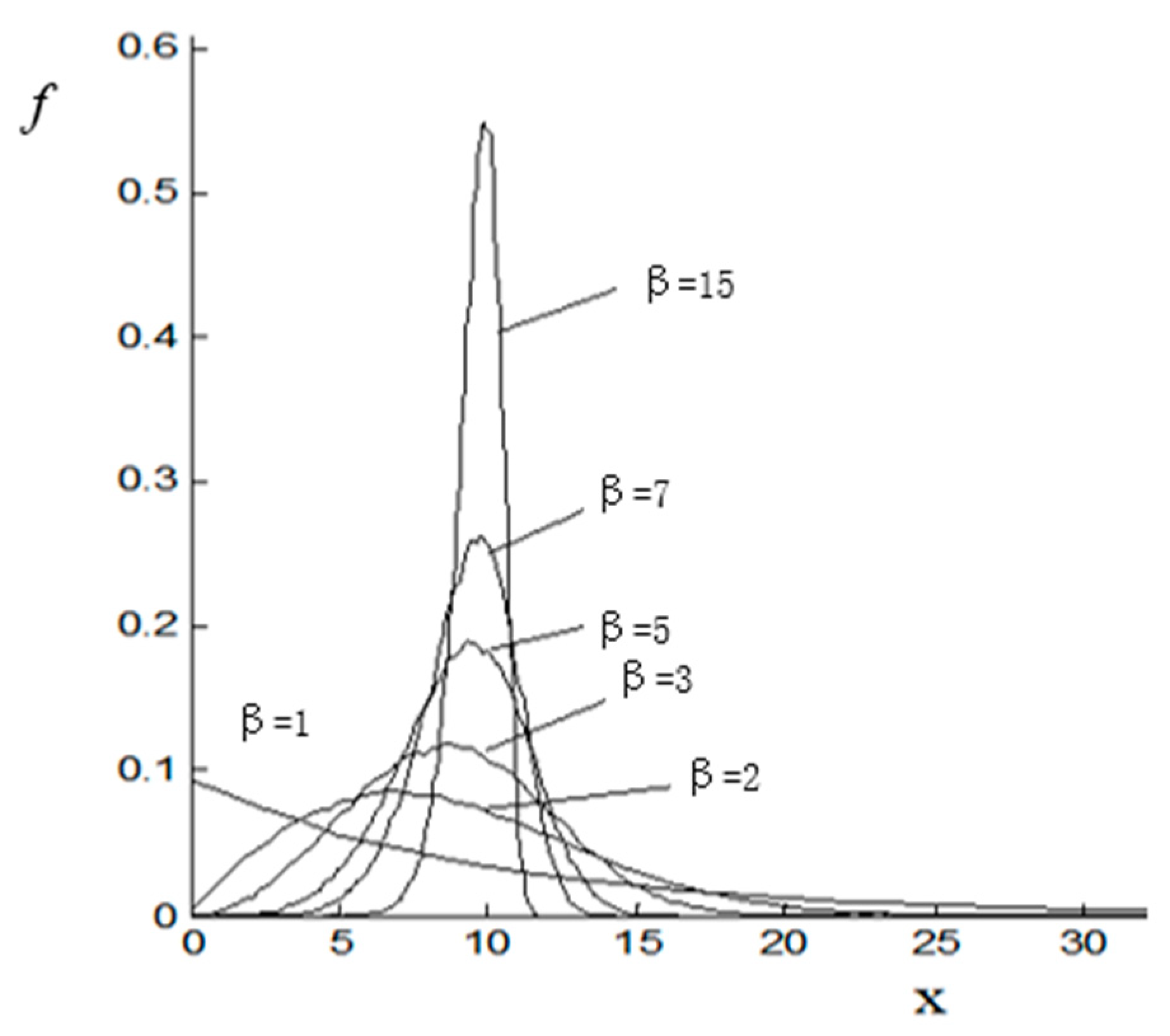
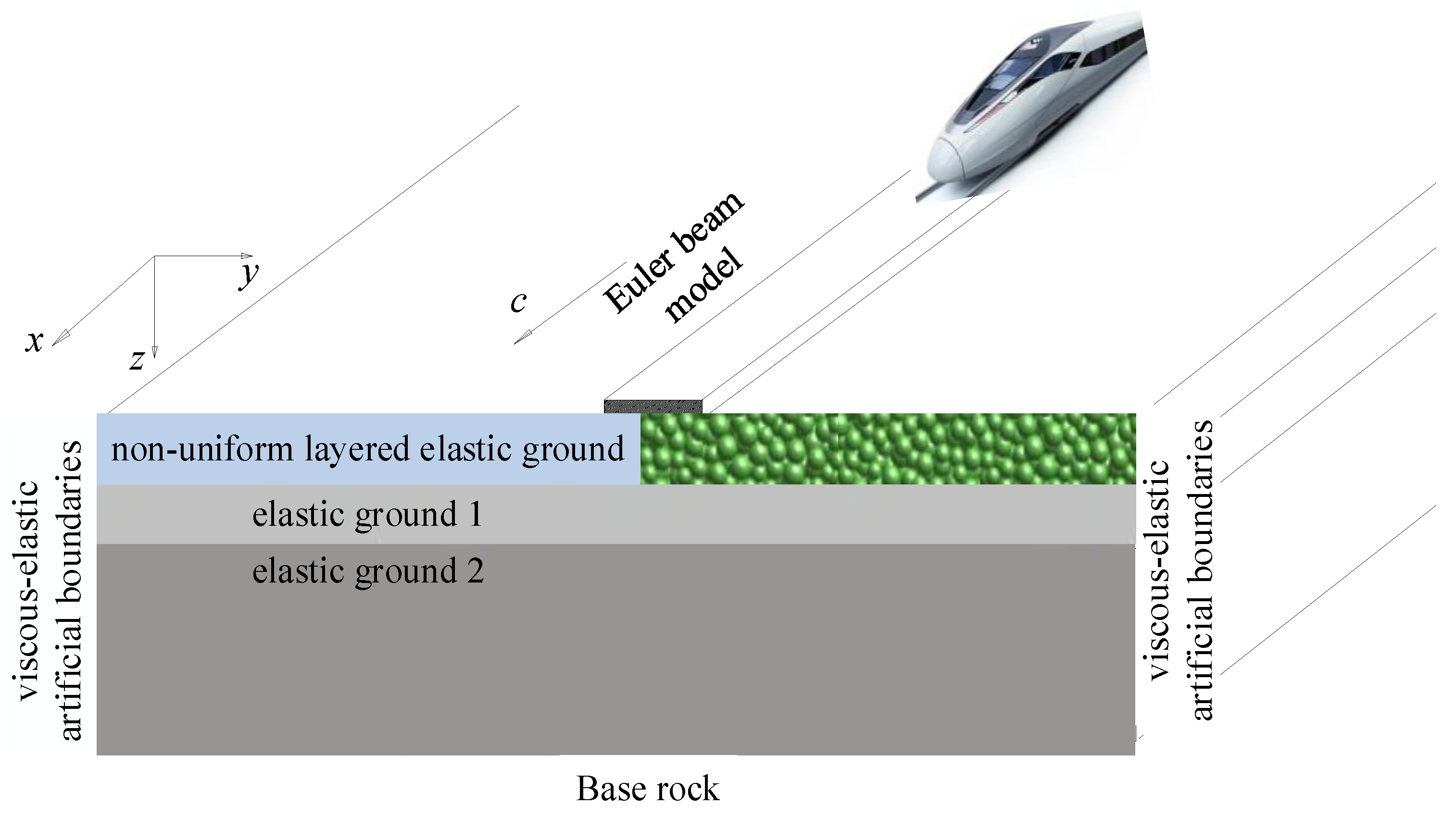


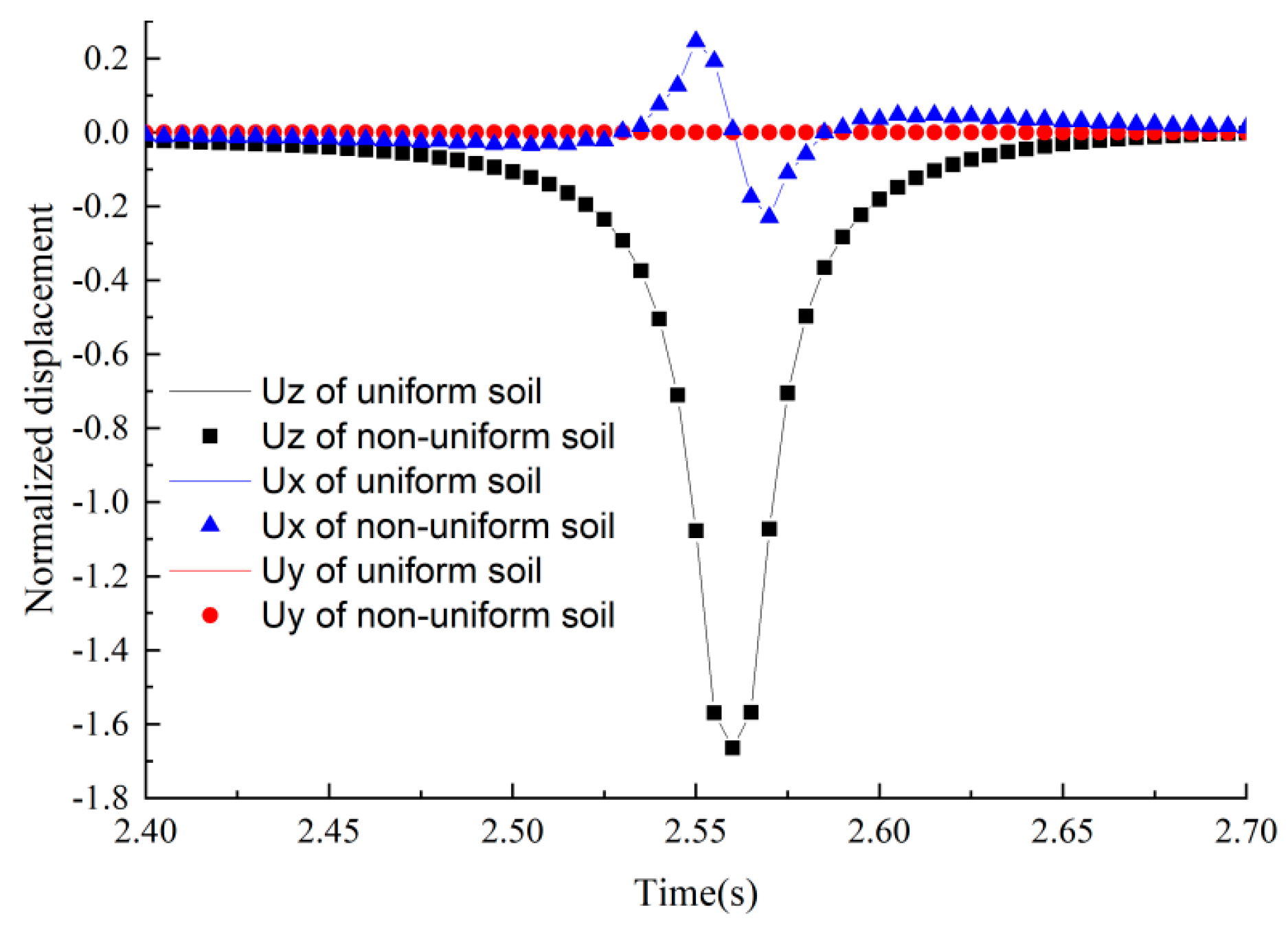
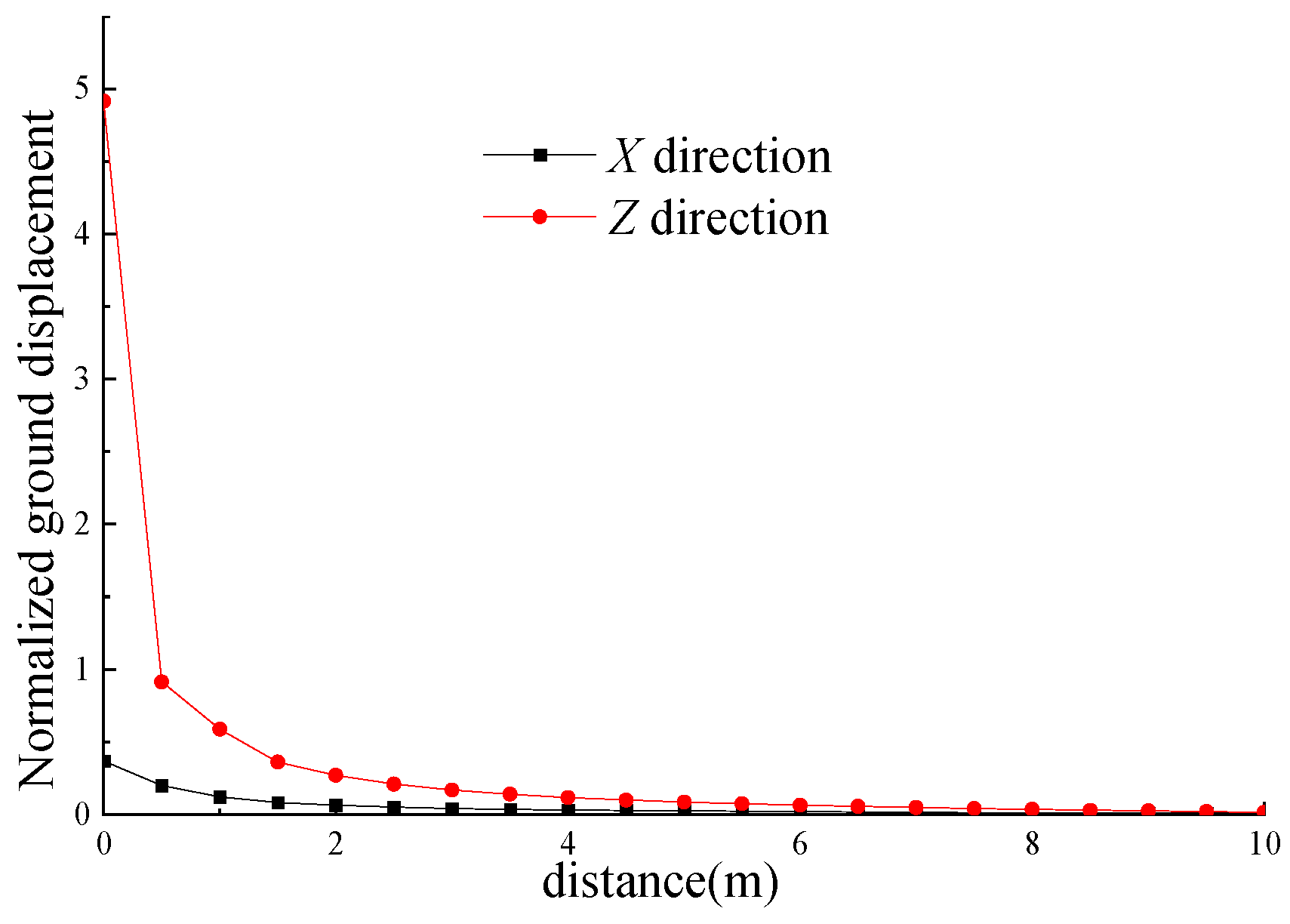
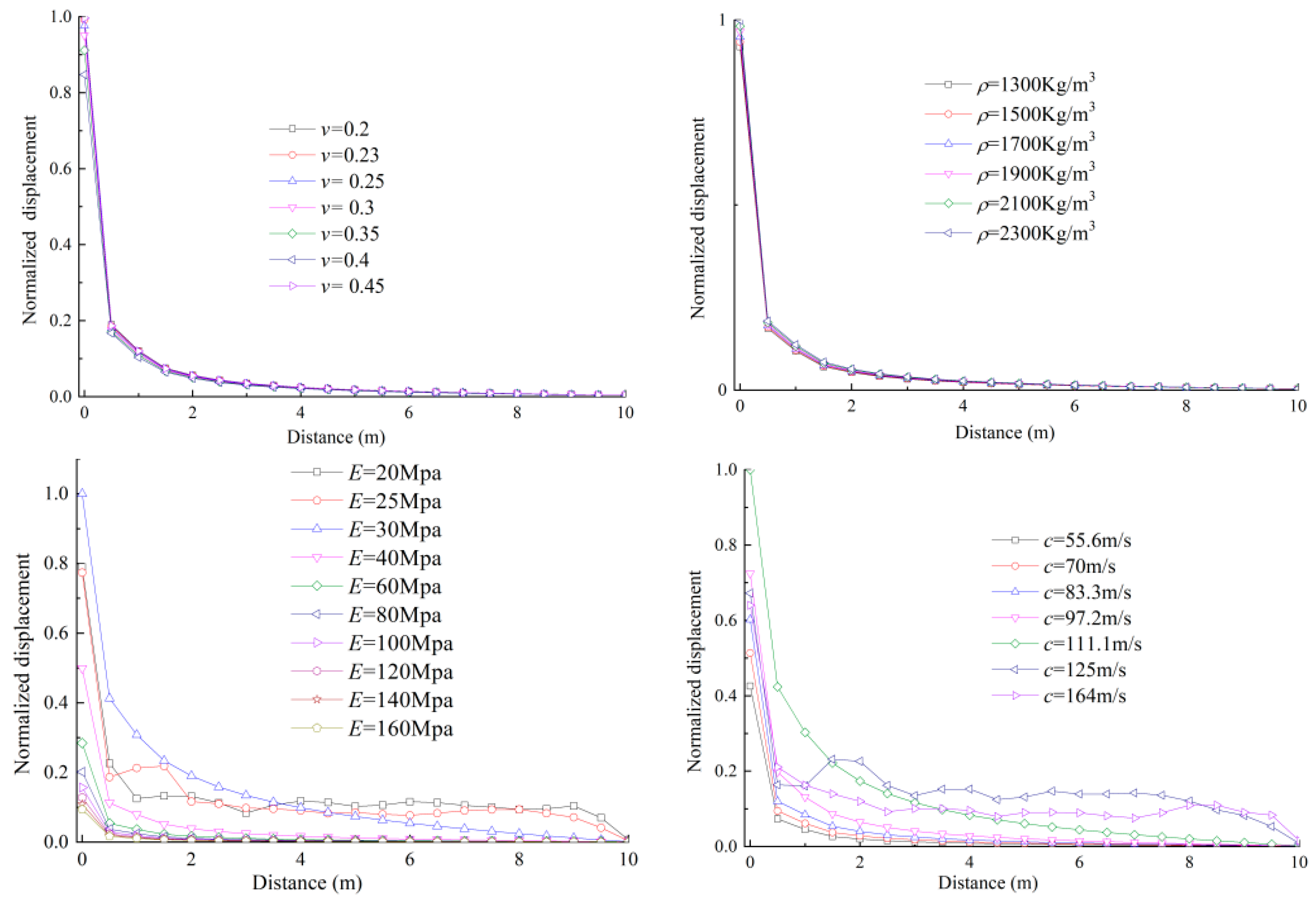
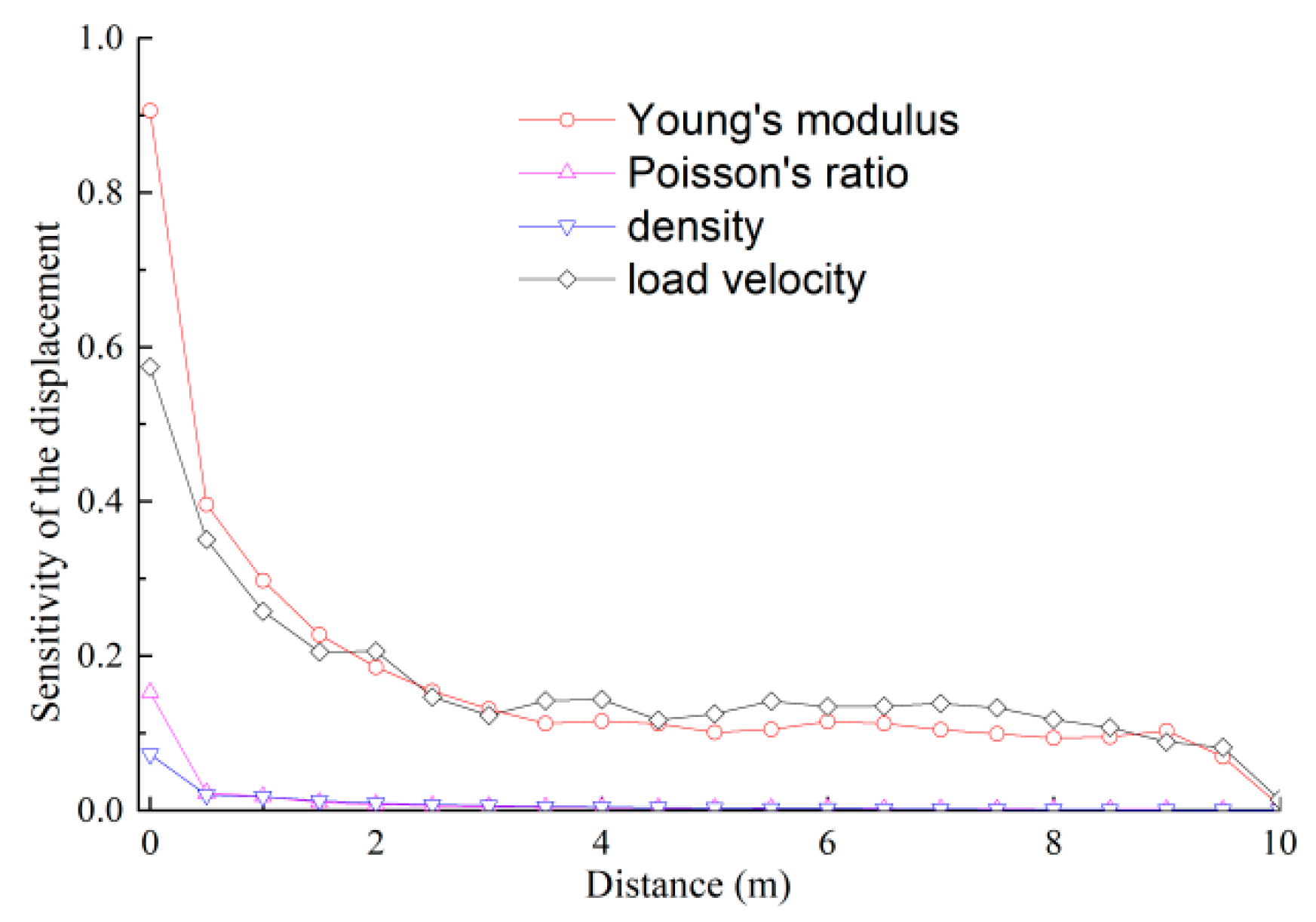
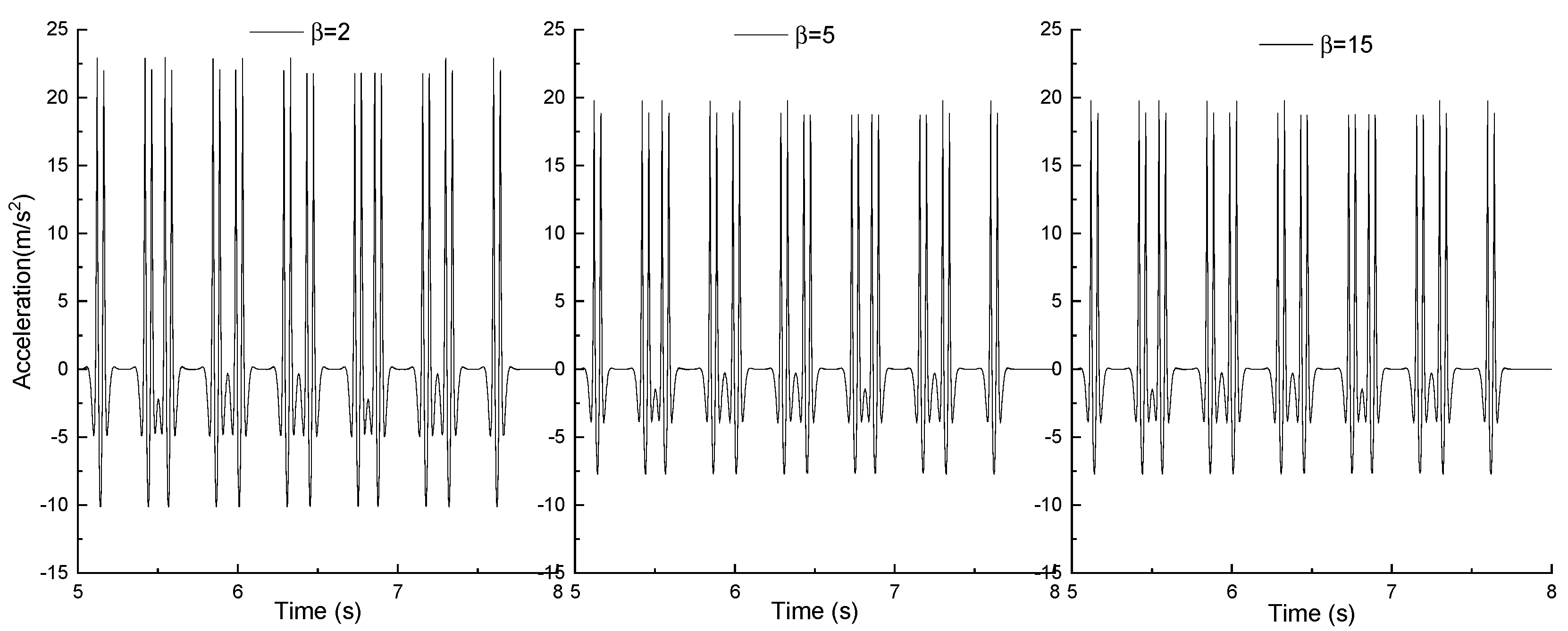
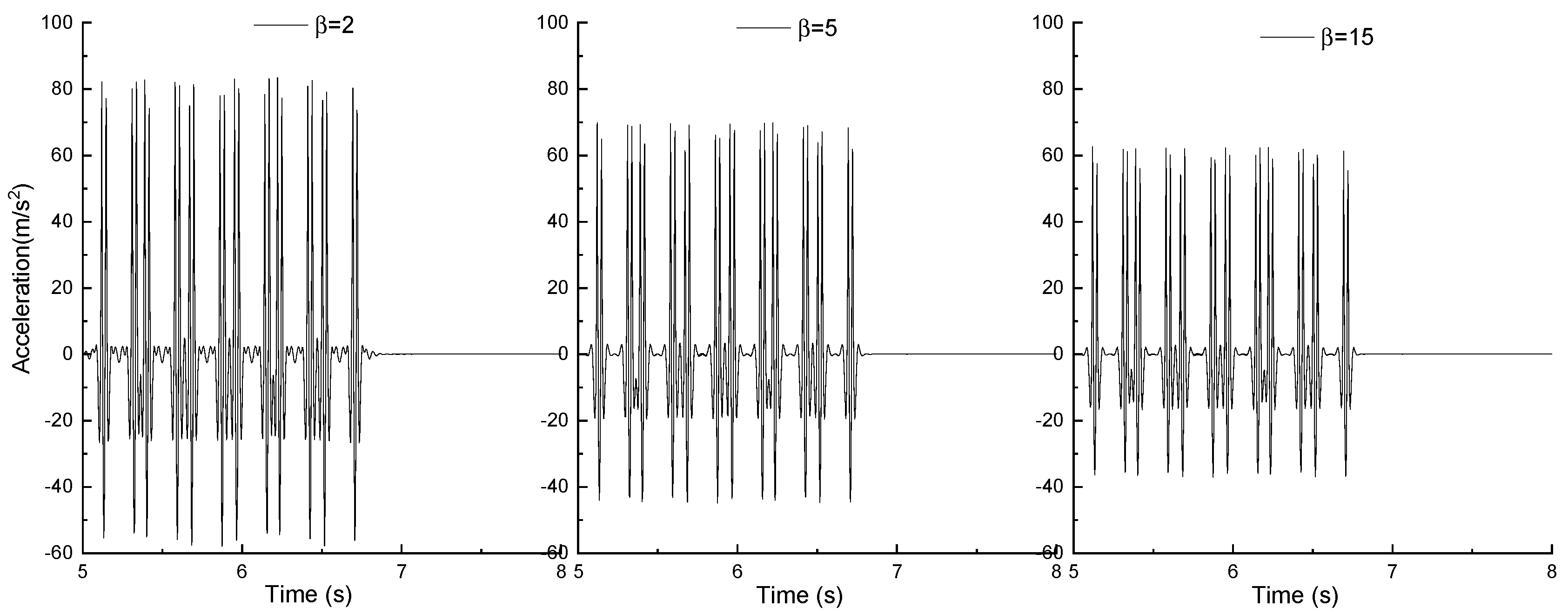
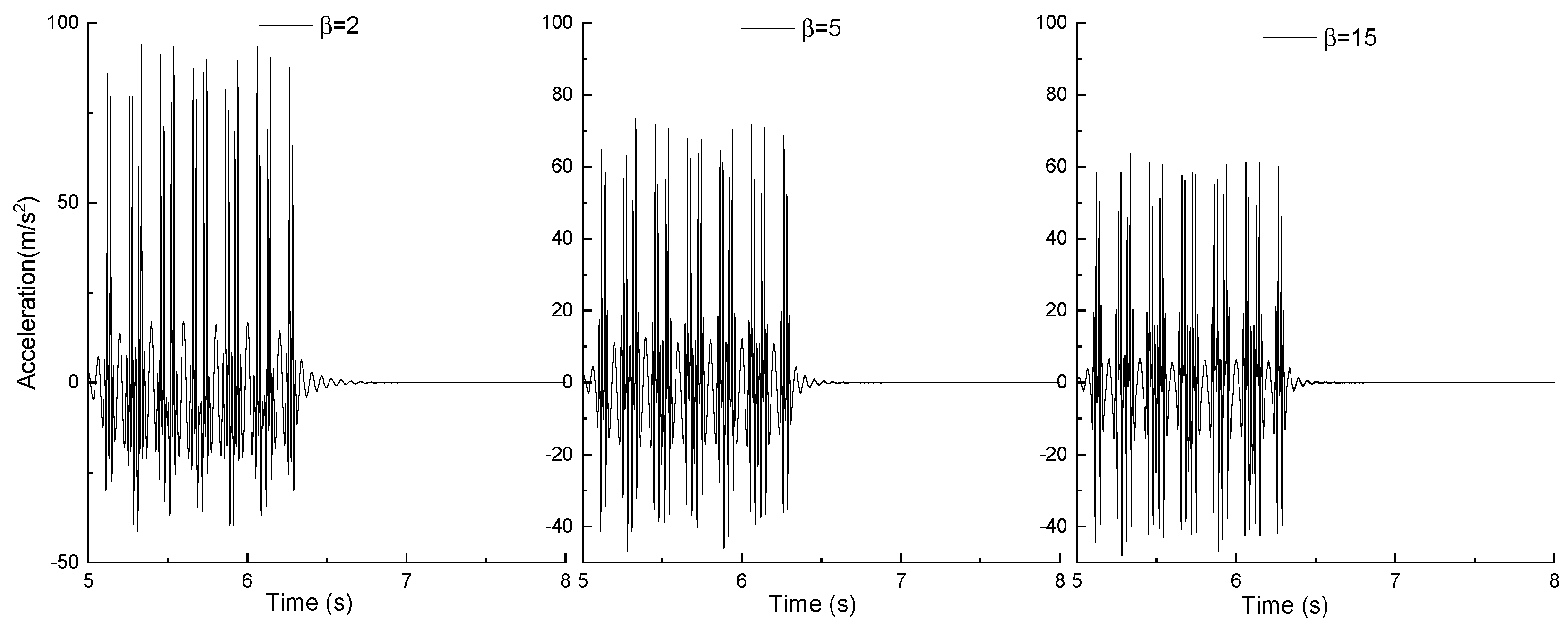




| Parameters | Young’s Modulus (MPa) | Poisson’s Ratio | Density (kg/m3) | Load Velocity (m/s) |
|---|---|---|---|---|
| Benchmark Values | 80 | 0.30 | 2000 | 70.0 |
| Variation range | [20, 160] | [0.20, 0.45] | [1300, 2300] | [55.6, 164.0] |
| Young’s Modulus (MPa) | Poisson’s Ratio | Density (kg/m3) | Load Velocity (m/s) |
|---|---|---|---|
| 20 | 0.20 | 1300 | 55.6 |
| 25 | 0.23 | 1500 | 70.0 |
| 40 | 0.25 | 1700 | 83.3 |
| 60 | 0.30 | 1900 | 97.2 |
| 80 | 0.35 | 2100 | 111.1 |
| 100 | 0.40 | 2300 | 125.0 |
| 120 | 0.45 | - | 164.0 |
| 160 | - | - | - |
| Soil Layer No. | Thickness (m) | Shear Wave Velocity (m/s) | Density (kg/m3) | Poisson’s Ratio | Damping Coefficient | Mean Value of Elastic Modulus (107 pa) | Homogeneity Coefficient | Shear Modulus (107 pa) |
|---|---|---|---|---|---|---|---|---|
| 1 | 2 | 95 | 1500 | 0.35 | 0.05 | 3.66 | 2, 5, 15 | 1.35 |
| 2 | 2 | 150 | 1700 | 0.30 | 0.05 | 9.95 | 200 | 3.83 |
| 3 | 26 | 280 | 1800 | 0.25 | 0.05 | 35.28 | 200 | 14.11 |
Disclaimer/Publisher’s Note: The statements, opinions and data contained in all publications are solely those of the individual author(s) and contributor(s) and not of MDPI and/or the editor(s). MDPI and/or the editor(s) disclaim responsibility for any injury to people or property resulting from any ideas, methods, instructions or products referred to in the content. |
© 2024 by the authors. Licensee MDPI, Basel, Switzerland. This article is an open access article distributed under the terms and conditions of the Creative Commons Attribution (CC BY) license (https://creativecommons.org/licenses/by/4.0/).
Share and Cite
Yao, S.; Yue, L.; Xie, W.; Zheng, S.; Tang, S.; Liu, J.; Wang, W. Investigating the Influence of Non-Uniform Characteristics of Layered Foundation on Ground Vibration Using an Efficient 2.5D Random Finite Element Method. Mathematics 2024, 12, 1488. https://doi.org/10.3390/math12101488
Yao S, Yue L, Xie W, Zheng S, Tang S, Liu J, Wang W. Investigating the Influence of Non-Uniform Characteristics of Layered Foundation on Ground Vibration Using an Efficient 2.5D Random Finite Element Method. Mathematics. 2024; 12(10):1488. https://doi.org/10.3390/math12101488
Chicago/Turabian StyleYao, Shaofeng, Liang Yue, Wei Xie, Sen Zheng, Shuo Tang, Jinglong Liu, and Wenkai Wang. 2024. "Investigating the Influence of Non-Uniform Characteristics of Layered Foundation on Ground Vibration Using an Efficient 2.5D Random Finite Element Method" Mathematics 12, no. 10: 1488. https://doi.org/10.3390/math12101488




